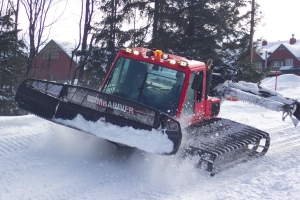Prevent Your Diesel Fuel from Gelling in Cold Temperatures
When the weather gets frigid, water isn’t the only thing freezing. In winter weather, drivers and fuel management professionals also need to be aware...

 Cold temperatures wreck havoc on the useability of diesel fuels and biodiesel blends because of their effect on the paraffinic components of the fuel.
Cold temperatures wreck havoc on the useability of diesel fuels and biodiesel blends because of their effect on the paraffinic components of the fuel.
Diesel fuel is a seamless blends of many different kinds and sizes of carbon molecules, and some of these molecules are fairly large and complex molecules known as paraffin waxes.
As the fuel cools down to 32 degrees F, these waxes will start to come out of solution, turning the fuel cloudy. As more of these waxes become insoluble, they float in the fuel like little seed crystals, which bump into each other, stick together and get larger. Eventually they'll be large enough to plug the fuel filter and shut the engine down.
How to keep diesel fuel from gelling? Let's explore some ways:
The most common practice in extremely cold climates is to mix a little #1 diesel (kerosene) with the on-road #2 diesel fuel. This helps lower the plug point temperature of the diesel fuel. Many places in the extreme cold zone will dispense a winter diesel fuel mix that already has the two fuels mixed together. This seems to work well, but this kind of winter diesel isn't easy to find if the trucker leaves the cold and travels down south before heading back north.
Talking to experienced diesel users, one thing a lot of them will tell you is that once you enter extreme cold temperature, you try to keep the engine running 24/7. The only time they shut it off is for short fuel stops. Keeping the engine running will keep the fuel moving and lessen the chance of a gelling problem stopping everything up.
The proper emergency gear to protect against fuel gelling consists of extra fuel filters, and a bottle each of cold flow treatment and diesel emergency treatment. The cold flow treatment would be used in advance of fuel gelling, when the truck gets ready to enter extreme cold. The emergency treatment is designed to melt gelled paraffin in the fuel system and get the fuel flowing again. The cost of both of these is only a fraction of the cost incurred when a truck gets shut down in the middle of a hauling job.
When the weather gets frigid, water isn’t the only thing freezing. In winter weather, drivers and fuel management professionals also need to be aware...
It’s well known that gas mileage goes down in winter, partly because they change the composition of winter gas to make it more volatile and burn...
Diesel fuel gels in cold weather because its paraffin wax components get less and less soluble as the temperatures drop. As more of it "drops out" of...